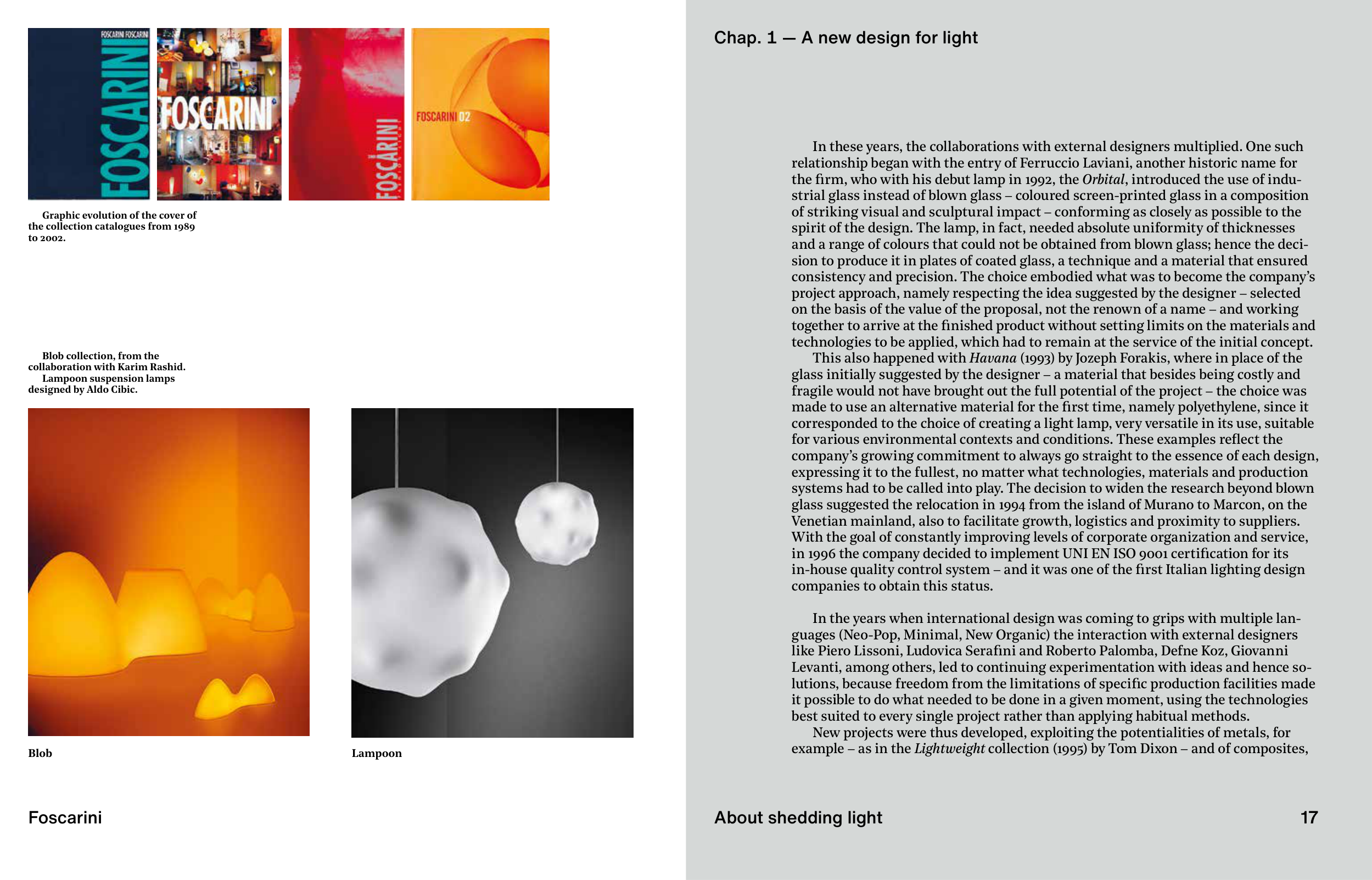17
Foscarini
About shedding light
Chap. 1 — A new design for light
In these years, the collaborations with external designers multiplied. One such
relationship began with the entry of Ferruccio Laviani, another historic name for
the fi rm, who with his debut lamp in 1992, the Orbital, introduced the use of indu-
strial glass instead of blown glass – coloured screen-printed glass in a composition
of striking visual and sculptural impact – conforming as closely as possible to the
spirit of the design. The lamp, in fact, needed absolute uniformity of thicknesses
and a range of colours that could not be obtained from blown glass; hence the deci-
sion to produce it in plates of coated glass, a technique and a material that ensured
consistency and precision. The choice embodied what was to become the company’s
project approach, namely respecting the idea suggested by the designer – selected
on the basis of the value of the proposal, not the renown of a name – and working
together to arrive at the fi nished product without setting limits on the materials and
technologies to be applied, which had to remain at the service of the initial concept.
This also happened with Havana (1993) by Jozeph Forakis, where in place of the
glass initially suggested by the designer – a material that besides being costly and
fragile would not have brought out the full potential of the project – the choice was
made to use an alternative material for the fi rst time, namely polyethylene, since it
corresponded to the choice of creating a light lamp, very versatile in its use, suitable
for various environmental contexts and conditions. These examples refl ect the
company’s growing commitment to always go straight to the essence of each design,
expressing it to the fullest, no matter what technologies, materials and production
systems had to be called into play. The decision to widen the research beyond blown
glass suggested the relocation in 1994 from the island of Murano to Marcon, on the
Venetian mainland, also to facilitate growth, logistics and proximity to suppliers.
With the goal of constantly improving levels of corporate organization and service,
in 1996 the company decided to implement UNI EN ISO 9001 certifi cation for its
in-house quality control system – and it was one of the fi rst Italian lighting design
companies to obtain this status.
In the years when international design was coming to grips with multiple lan-
guages (Neo-Pop, Minimal, New Organic) the interaction with external designers
like Piero Lissoni, Ludovica Serafi ni and Roberto Palomba, Defne Koz, Giovanni
Levanti, among others, led to continuing experimentation with ideas and hence so-
lutions, because freedom from the limitations of specifi c production facilities made
it possible to do what needed to be done in a given moment, using the technologies
best suited to every single project rather than applying habitual methods.
New projects were thus developed, exploiting the potentialities of metals, for
example – as in the Lightweight collection (1995) by Tom Dixon – and of composites,
17
Blob
Lampoon
Blob collection, from the
collaboration with Karim Rashid.
Lampoon suspension lamps
designed by Aldo Cibic.
Graphic evolution of the cover of
the collection catalogues from 1989
to 2002.


